|
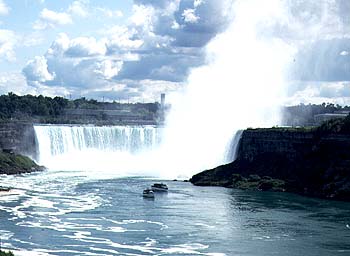
The Niagara Falls on the Niagara River which leads to the St Lawrence. The cap rock for the falls is limestone about 200 million years old.Length: 1200 kilometres (800 miles); drainage area (including the Great lakes): 1.5 million square kilometres (600,000 square miles). St Lawrence Seaway System: 4000 kilometres (2500 miles) long. The St Lawrence forms one of the largest river systems in North America. A significant amount of the river water is derived from the Great Lakes. The St Lawrence River flows from Minnesota in the U.S., east through the Great Lakes to the Gulf of St Lawrence in Canada. The flow is unusually regular because of the storage effect imposed by the Great Lakes. However, the river ices over in winter.
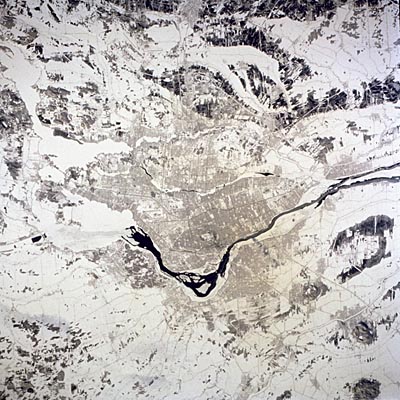
The St Lawrence as it appears in early winter. Everything is snow covered and the river is icing over.The importance of the St Lawrence River has attracted both cities and industries, including the cities of Montreal and Quebec. Before the construction of the St Lawrence Seaway, ocean-going ships could not get above Montreal for most of the year. Since the completion of the seaway in 1959, ocean-going ships as large as 24,000 tonnes can reach all of the Great Lakes and therefore serve the important ports of Toronto, Detroit, Chicago etc.
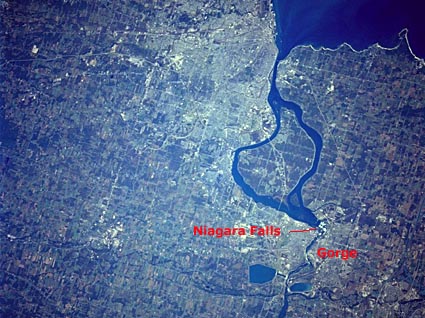
The setting of the Niagara Falls.
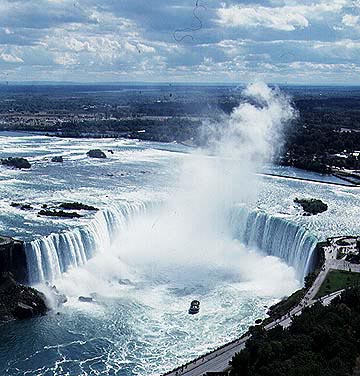
The Horseshoe Falls on the Niagara River (The Canadian Niagara).
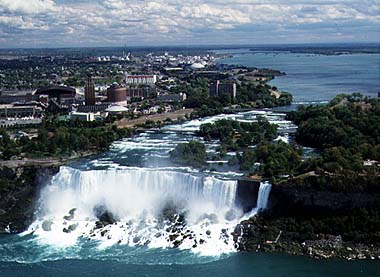
The American Falls on the Niagara River.
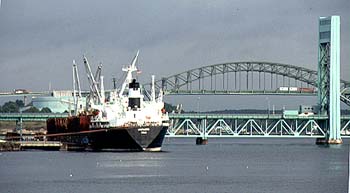
The St Lawrence at Montreal.
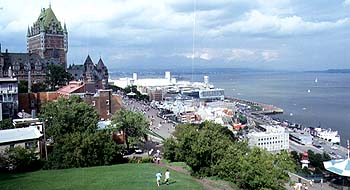
The St Lawrence at Quebec. |